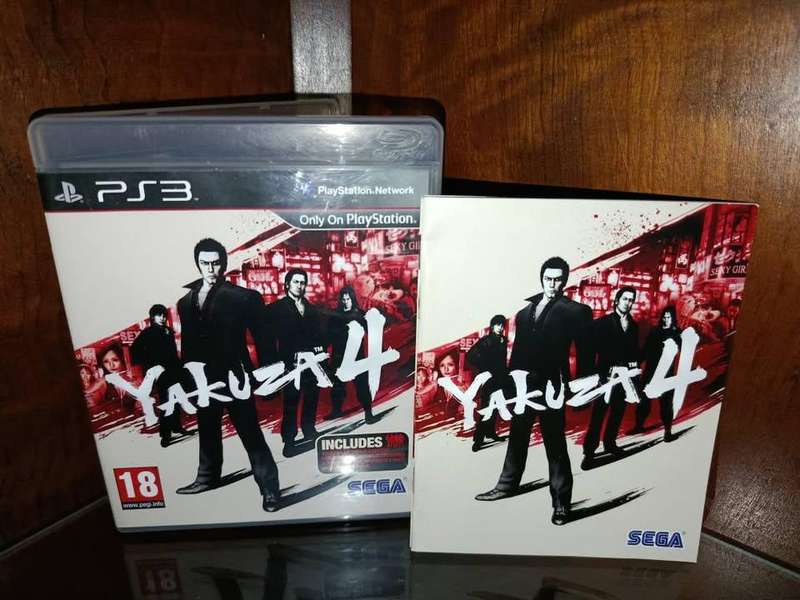
Yakuza 4 Playstation 3 PS3
Check my rate
View locations
| Main centres: | 1-3 business days |
| Regional areas: | 3-4 business days |
| Remote areas: | 3-5 business days |

| Main centres: | 1-3 business days |
| Regional areas: | 3-4 business days |
| Remote areas: | 3-5 business days |
Good condition disc and includes manual
Yakuza 4[b] is a 2010 action-adventure game developed and published by Sega for the PlayStation 3.[1] The sequel to Yakuza 3 and the fourth main installment in the Yakuza series, it was released in Japan in March 2010 and internationally in March 2011.
The available mini-games are pachinko, fishing, onsen, massage, table tennis, hanafuda and karaoke, including duets with non-player characters (NPCs). In Haruka's Wish, the player must raise Haruka's trust level. Each main character has a side game or goal which must be completed, and many side games are related to trophies.
Akiyama may create friendship (, Najimi) with some NPCs by buying them items, or with some storekeepers by being a regular customer. His other mission, Create a #1 Hostess! (No. 1!, No. 1 Kyabajō o Tsukurō!), is to scout girls for the cabaret he owns. A girl is improved by dressing her up and training her. After she becomes number one, the player can choose a final outfit for her and she will appear at the cabaret. A similar challenge in the Japanese version of Yakuza 3 was cut from overseas versions and was reintroduced for its remastered edition.
Saejima's mission, Create a Fighter! (!, Kakutōka o Tsukurō!) is to train fighters to win tournaments after 50 rounds or less of training (building up movesets). Different movesets allow different moves to be performed.
Tanimura's mission, Resolving Police-Radio Disputes (, Keisatsu Musen Toraburu Kaiketsu Batoru), is to keep the peace on the streets of Kamurocho. Radio reports tell him where to find incidents, and the player must defeat the perpetrator. In Kiryu's mission, Team Encounter Battle (), seven gangs attack him and he must fight to reach each gang leader.
Each character has his own style of fighting and special moves as their body frames are different.[5] Kiryu focuses on the powerful blows of Karate and Boxing, Akiyama prefers swift attacks using Taekwondo, Saejima favors powerful and slow brawling/grappling attacks using wrestling techniques, and Tanimura uses the defensive maneuvers of Aikido and Jiu Jitsu that he learned from his time at the police academy.